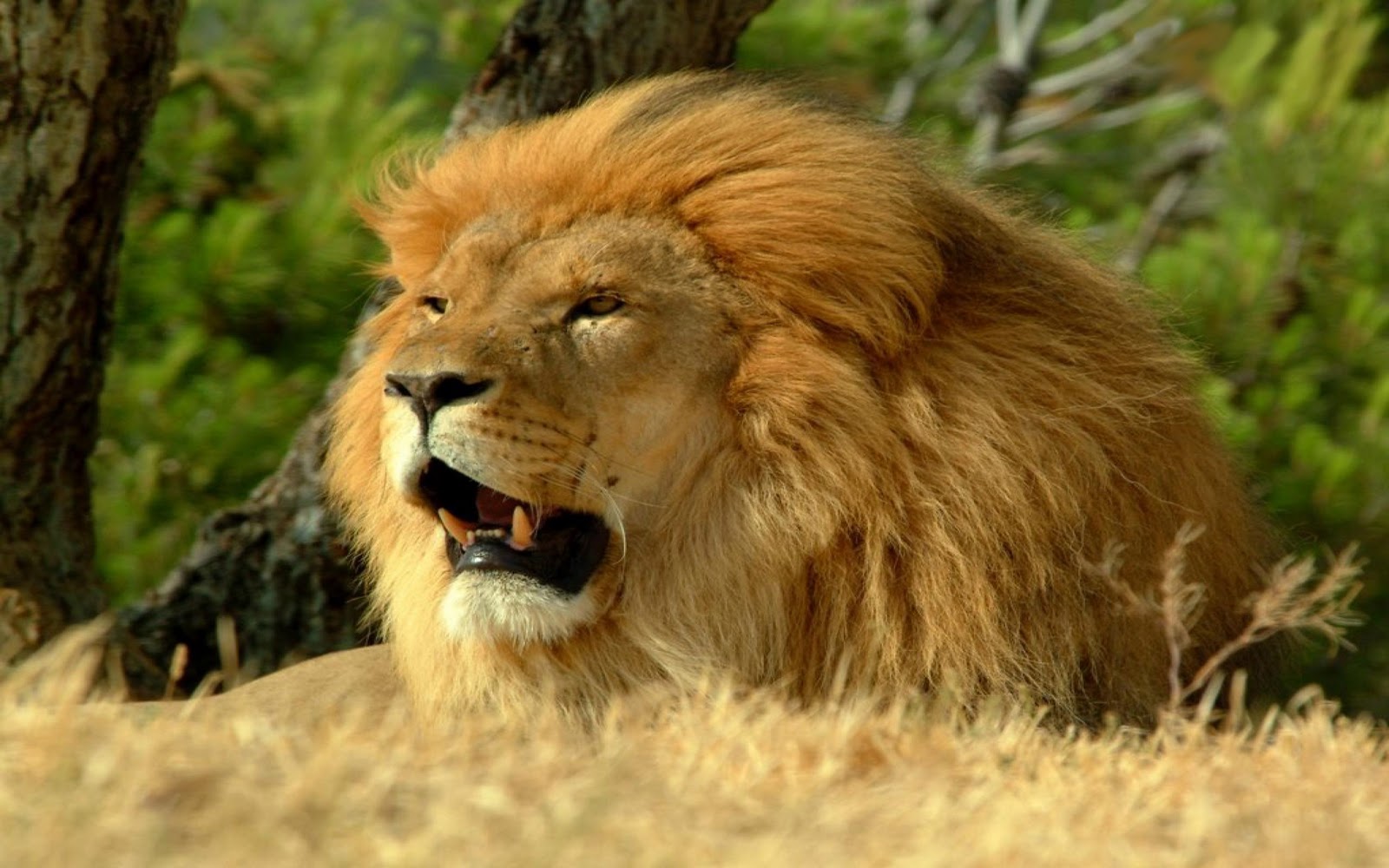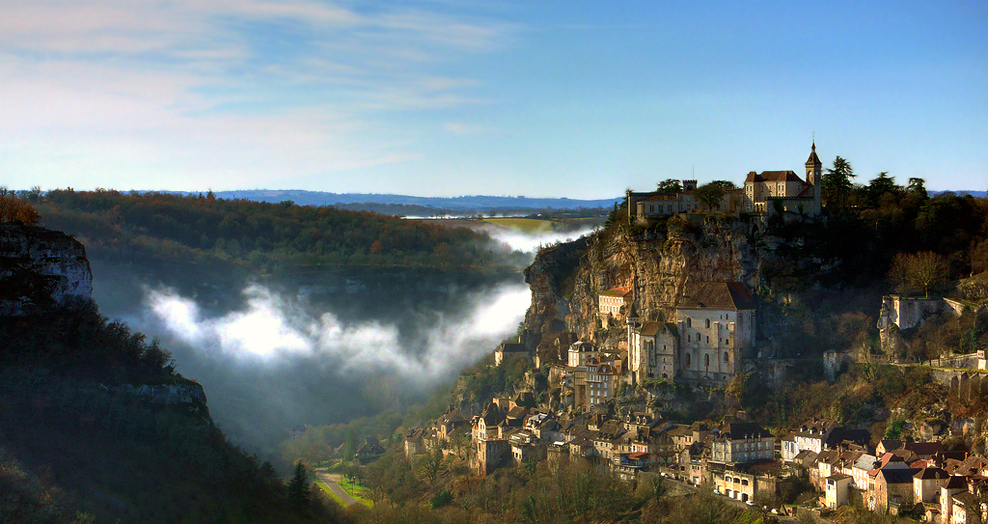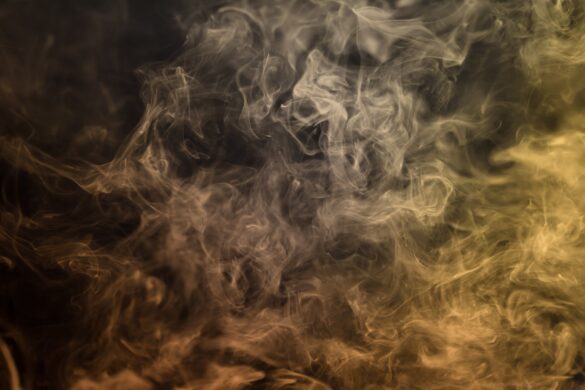Devil’s Door stands proudly as one of El Salvador’s most prominent natural landmarks. This remarkable rock formation rises 1,250 meters (4,101 feet) above sea level and sits just outside San Salvador. The geological wonder, known as “Puerta del Diablo” in Spanish, offers visitors more than scenic views – it holds a captivating story in local folklore.
The sort of thing I love about Puerta del Diablo is its legendary origin. The story tells us that the archangel battled the devil in the town of Panchimalco. The fight ended with such force that it created the massive gap in the rocky ridge that exists today. La Puerta del Diablo El Salvador features three distinct viewpoints, and the tallest one, “Chulon,” rewards visitors with sweeping views of El Salvador’s varied terrain. Visitors can spot several volcanoes, Lake Ilopango, and the Pacific Ocean on clear days.
On top of that, it appeals to adventure enthusiasts who can explore a 5-kilometer hiking trail that takes 2-3 hours to complete. The path winds through lush landscapes and reveals stunning valley views. This natural wonder has become a favorite spot among local and international tourists, thanks to its reasonable entrance fees – $1 to park and $3 to access two of the viewpoints.
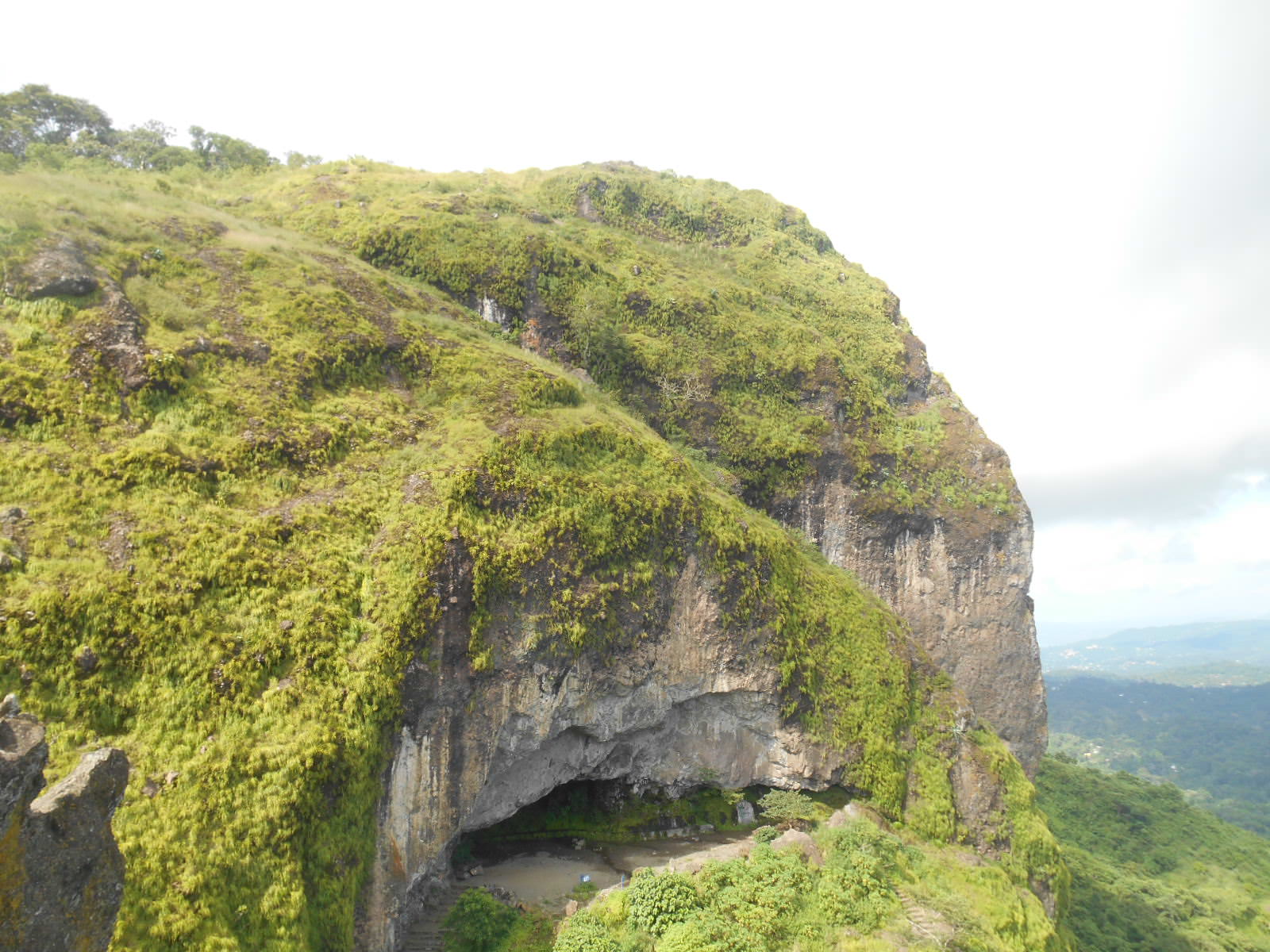
The Legend Behind La Puerta del Diablo
La Puerta del Diablo fascinates visitors with its stunning views and an array of legends that span centuries. The name translates to “The Devil’s Door” in English, which reflects the supernatural tales surrounding this natural landmark.
The battle of good vs evil
The most compelling legend of Puerta del Diablo speaks of an epic battle between celestial forces. The people of Panchimalco tell stories about an ancient confrontation between the archangel and the devil in their town. The archangel emerged victorious and cast the devil out. The evil one crashed into the rocky ridge with such force that his body created the distinctive gap visible today.
Locals often point to the two sides of the doorway that curve upward from across the valley. These curves resemble the devil’s horns – proof of its diabolical origin, they claim. The site also held deep meaning for the indigenous Mayan Pipil people. They saw it as sacred ground and performed ritual sacrifices here before Spanish colonizers arrived.
Folklore of the devil’s escape
A prominent tale emerges from colonial times when the Renderos family owned this property – the same family that gave Los Planes de Renderos its name. The story revolves around María de La Paz, the beautiful daughter of landowner Rosendo Renderos. Satan himself noticed her beauty and started courting her.
The tale suggests María remained either a prisoner in one of the caves or faced repeated advances from the devil. Her father gathered neighboring families to protect his daughter and hunt down the evil suitor. The devil saw his reflection in a small lake and fled in panic. He broke through the rock to escape when cornered, creating the distinctive arch.
One version adds a religious twist. Saint Agatha, patron saint of earthquakes and volcanic eruptions, sent María a message after the devil’s escape. The saint told her to release 100 doves through the devil’s door each year. If she failed, the devil would wake up and bring earthquakes and eruptions to the land.
Modern myths and ghost stories
New legends about La Puerta del Diablo continue to emerge. Storytellers share tales of young lovers jumping from cliffs. They tell of a beautiful young woman who danced with the devil, only to look down at his feet and fall to her death.
Recent versions include stories about security cameras capturing footage of a beautiful girl dancing with an invisible partner. Some speak of bloody messages appearing mysteriously on bathroom mirrors. These modern tales keep the site’s mystique alive for younger generations.
The site carries a darker historical significance. During El Salvador’s civil war (1980-1992), La Puerta del Diablo became an execution point. Bodies thrown off the cliff became “the problem of Panchimalco,” the quiet indigenous village below. This grim history adds depth to the site’s complex legacy.
Salvadorans have reshaped this natural wonder’s identity. The location has evolved from a place of dark memories into a celebrated landmark where people appreciate its geological uniqueness and rich cultural heritage.
What to Expect at Devil’s Door El Salvador
Puerta del Diablo El Salvador gives visitors an amazing natural experience that’s way beyond the reach and influence of its legendary tales. This landmark is worth the trip for anyone who wants to see El Salvador’s natural wonders up close.
Panoramic views of volcanoes and valleys
La Puerta del Diablo will take your breath away with its stunning 360-degree views of El Salvador’s varied landscape. Clear days let you spot several volcanoes, including the impressive San Salvador Volcano to the northwest and Ilopango’s twin peaks to the east. The views also take in Lake Ilopango’s sparkling waters, which fill an ancient volcanic caldera.
Devil’s Door shows off the country’s geological diversity beautifully. Panchimalco’s lush valleys spread out below, creating a beautiful contrast with the volcanic ridges on the horizon. The Pacific Ocean sparkles in the distance on really clear days, especially during dry season.
The three main viewpoints
Devil’s Door has three distinct spots to take in the views, and each one gives you a different look at the surrounding landscape:
- The Main Platform – Right at the entrance, this easy-to-reach viewpoint shows you the classic view of the rock formation and works great as a starting point.
- The Rock Gap Viewpoint – This spot sits between two massive rocks that make up the “door.” It gives you the most iconic shots and draws photographers who want to capture Devil’s Door’s true essence.
- Chulon – The highest point needs a short but somewhat challenging climb. The amazing panoramic views from the top make the effort worth it. This spot becomes really popular at sunset.
Each spot has its own physical demands. The Main Platform works for most people, but Chulon needs you to be reasonably fit to handle the steeper ground.
Weather conditions and visibility tips
Weather at Devil’s Door changes a lot throughout the year, which affects what you can see and how much you’ll enjoy your visit. The dry season (November through April) brings the clearest views with few clouds, especially early in the morning before heat makes things hazy.
Afternoon thunderstorms often roll in during rainy season (May through October), and clouds can block the views. Your best bet is to come in the morning when visibility is better. The viewpoint stays cooler than San Salvador city because it sits higher up and catches more wind.
Here’s how to get the best views and photos:
- Visit between 7-10 AM for clear views and good lighting
- Pick weekdays to avoid crowds
- Bring binoculars to spot faraway landmarks
- Pack some layers since the wind can pick up quickly
The landmark looks impressive whatever the weather, but timing your visit right will help you get the most out of Devil’s Door’s amazing views.
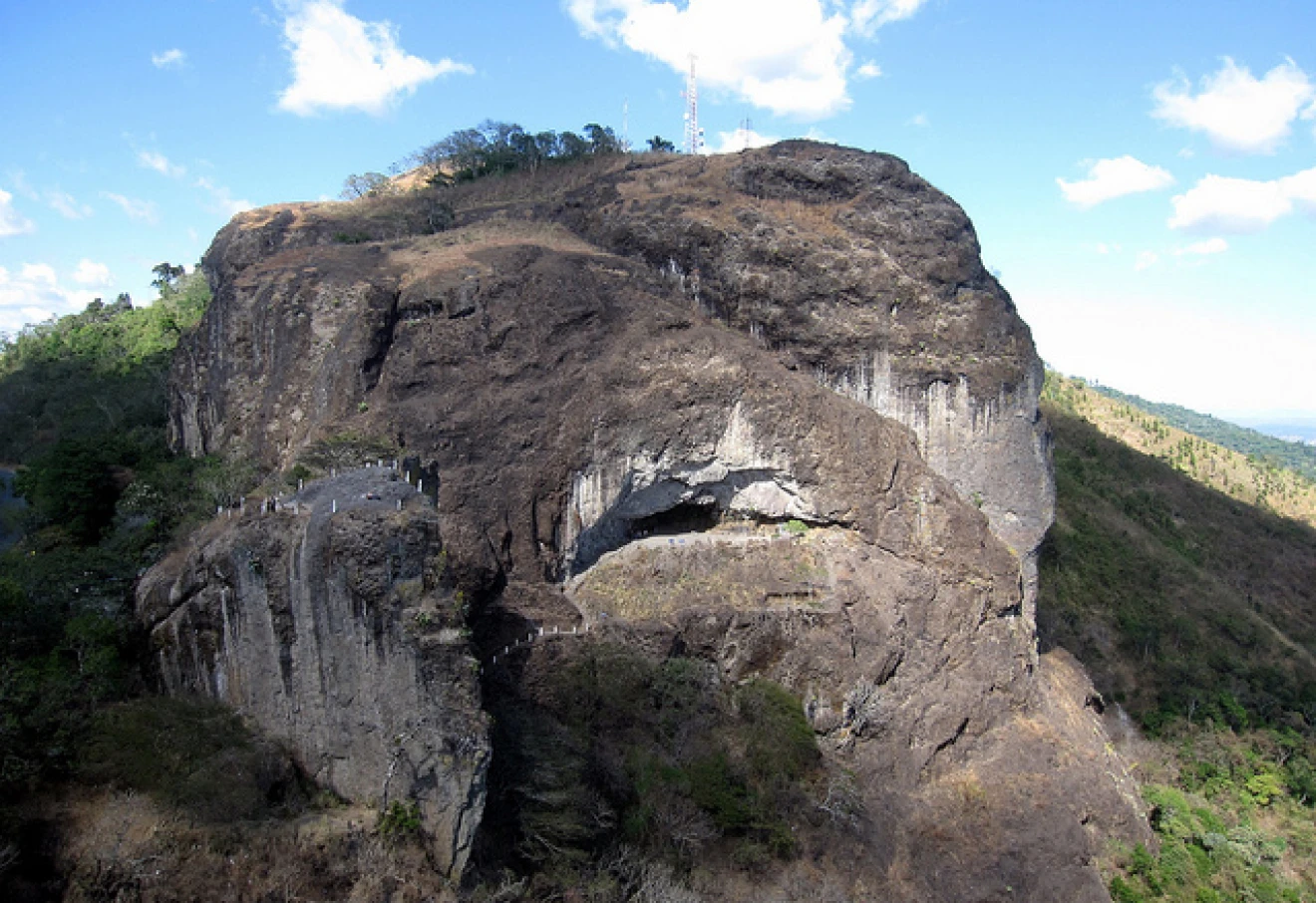
Things to Do Around Puerta del Diablo
Devil’s Door El Salvador offers more than just amazing views. This natural landmark has grown into an adventure hub that draws both thrill-seekers and culture enthusiasts with its exciting activities.
Zip-lining and rappelling
The Puerta del Diablo attracts adrenaline junkies with its thrilling zipline experience. You’ll soar between rocky mountains on a 508-foot (155-meter) line that takes about two minutes and gives you unique aerial views of volcanoes and valleys [191]. The activity comes with some rules – it’s not available during September and October, and you need to weigh less than 260 pounds (118 kilos) [191].
La Puerta del Diablo El Salvador is a rock climber’s dream. The site features about 60 routes spread across 13 different walls or sectors [203]. Climbers who want a more structured experience can take guided tours to the Twin Rocks, which reward them with breathtaking views [202].
Exploring caves and rock formations
The mysterious Puerta del Diablo Cave welcomes visitors through guided tours that showcase its geological wonders [191]. Three main rock structures dominate the area – they were once a single peak until a massive storm split them apart in 1762 [203].
Local food stalls and artisan markets
Plaza Típica’s many food stalls serve up authentic Salvadoran dishes to hungry visitors [191]. The area’s famous pupusas – thick cornmeal cakes with various fillings – are a must-try [191]. Some tours even let you learn how to make these national dishes yourself [191].
Nearby attractions: Los Planes de Renderos
Los Planes de Renderos sits just minutes away from Devil’s Door in El Salvador. This charming town’s “pupusódromos” (small restaurants specializing in pupusas) are a local favorite [241]. The town offers spectacular views of San Salvador’s lights twinkling in the valley below like a sea of stars against dark mountains [242]. Sunday evenings bring the place to life with music, dancers, and street vendors creating a festive atmosphere [242].
Planning Your Visit in 2025
Planning a trip to Puerta del Diablo El Salvador takes smart preparation to make the most of this remarkable site. Good planning helps visitors appreciate this iconic landmark and avoid common mistakes that could take away from their experience.
How to get there from San Salvador
Getting to Devil’s Door El Salvador from the capital gives you several options. Bus number 12 from the Cathedral stands out as the cheapest way at just $0.35 USD per person. These busses leave often from 6 Calle Poniente/Avenida Cuscatlan near Palacio Nacional. The trip takes 45-60 minutes based on traffic.
Taxis and ride-sharing services offer more comfort, with prices between $15-$25. Renting a car lets you enjoy a scenic 30-40 minute drive from San Salvador.
Entrance fees and opening hours
La Puerta del Diablo opens daily from 8:00 AM to 10:00 PM as of 2025. Parking costs $1.00 per vehicle, and access to regular areas comes free. The two premium viewpoints cost $3.00 each. Most people find 1-2 hours enough to see everything at the site.
Best time of year and day to visit
Devil’s Door in El Salvador looks best during morning visits before noon because afternoon clouds tend to block the amazing views. Visitors who arrive between 7-8 AM get the bonus of smaller crowds and perfect photo opportunities.
The dry season from November through April brings the most reliable weather to Puerta del Diablo El Salvador. Temperatures stay comfortable between 20°C-30°C (68°F-86°F), making it perfect to explore the area.
Where to stay nearby
You’ll find many places to stay near La Puerta del Diablo, from budget spots to luxury hotels. The nearest hotels sit about 1.2 miles from the site, with several highly-rated options available.
Barceló San Salvador starts at $116.90 per night, while Fairfield by Marriott rooms go for $107.50. Budget travelers might like Novo Hotel & Suite, with rooms starting at $63.16. Most hotels nearby come with pools, restaurants, and free breakfast.
Summing all up
Devil’s Door El Salvador stands as proof of nature’s grandeur and cultural significance. This iconic landmark gives visitors an unmatched mix of breathtaking views, thrilling adventures, and mysterious legends that engage generations. The site has altered the map over the last several years. What was once a place with dark historical ties has become a celebrated destination that shows off El Salvador’s natural beauty.
Visitors will definitely love the three distinct viewpoints that showcase the surrounding volcanic landscape. The highest viewpoint, Chulon, rewards hikers with spectacular 360-degree views stretching to the Pacific Ocean on clear days. Adventure seekers can take the 5-kilometer trail, test their courage on an exhilarating zipline, or climb one of many challenging rock routes.
La Puerta del Diablo charms visitors with its rich array of folklore. Tales of epic battles between good and evil, star-crossed lovers, and supernatural encounters add depth to this impressive natural wonder. These stories, passed down through generations, link today’s visitors to the indigenous Mayan Pipil people who saw this site as sacred.
New visitors should plan their trip well, especially during the dry season from November through April. The best visibility and photo opportunities come early in the morning, before afternoon clouds hide the magnificent views. The simple entrance fee remains affordable. Time spent at nearby Los Planes de Renderos with its famous pupuserías creates a complete cultural experience.
La Puerta del Diablo means more than just scenic views – it embodies El Salvador’s spirit. This site balances natural beauty, adventure, cultural heritage, and easy access. Everything in this vibrant Central American destination makes it worth visiting. People who come to Devil’s Door take home more than photos – they create lasting memories of one of El Salvador’s most treasured landmarks.
Here are some FAQs about the Devil’s Door El Salvador:
Why is it called the Devil’s Door in El Salvador?
The Devil’s Door in El Salvador gets its ominous name from local legends suggesting supernatural occurrences in the area. According to folklore, the el salvador devil’s door was believed to be a portal for dark forces, giving rise to its sinister reputation. The devil’s door in el salvador name also references the rock formation’s eerie appearance that resembles a massive doorway.
What is El Salvador most famous for?
El Salvador is most famous for its pristine Pacific beaches, world-class surfing spots, and the devil’s door el salvador rock formation. The country also stands out for adopting Bitcoin as legal tender and its remarkable transformation regarding security in recent years. The devil’s door in el salvador remains one of its most visited natural attractions alongside its numerous volcanoes.
Where is the Devil’s Door located?
The devil’s door el salvador is located in the mountains near the capital city of San Salvador, specifically in the Los Planes de Renderos area. This dramatic rock formation called the devil’s door in el salvador sits at about 1,100 meters above sea level in the Chulul volcano crater. Visitors can reach the el salvador devil’s door within about 30 minutes from downtown San Salvador.
What is the Puerta del Diablo about?
The Puerta del Diablo (Devil’s Door) is a striking rock formation that serves as both a natural wonder and cultural landmark. What is the devil’s door in el salvador becomes clear when seeing its two massive rock pillars forming what appears to be a gateway. The devil’s door in el salvador offers panoramic views and has become a popular spot for hiking and photography.
Why is it called the Devil’s Door?
The name Devil’s Door comes from the rock formation’s resemblance to a giant doorway and local legends about supernatural activities. The devil’s door el salvador earned its name partly due to tragic incidents where people reportedly fell from the cliffs. Stories about the el salvador devil’s door being a portal to another world further cemented its ominous reputation.
What is the evil eye in El Salvador?
In El Salvador, the evil eye refers to a folk belief about curses caused by jealous or envious stares, similar to other Latin American cultures. This superstition persists even as places like the devil’s door in el salvador attract more international visitors. Traditional remedies often involve spiritual cleansings to ward off the evil eye’s effects.
Is El Salvador rich or poor?
El Salvador is considered a lower-middle income country, though it has made significant economic progress in recent years. While not wealthy, investments in tourism at sites like the devil’s door el salvador and improved security have boosted development. The el salvador devil’s door area reflects this growth through improved infrastructure for visitors.
Is El Salvador good for tourists?
El Salvador has become increasingly good for tourists, offering beautiful beaches, volcanoes, and cultural sites like the devil’s door in el salvador. Safety improvements have made visiting the devil’s door el salvador and other attractions much more viable for international travelers. The country provides authentic Central American experiences at relatively affordable prices.
Are there jaguars in El Salvador?
While jaguars once roamed throughout El Salvador, including areas near the devil’s door el salvador, they are now extremely rare in the country. Occasional sightings near the el salvador devil’s door region suggest some may still exist in remote mountainous areas. Conservation efforts aim to protect any remaining jaguars in their natural habitats.
